Protein is a vital part of an athlete’s diet because it forms the building blocks of the tissues in the body. But what will be the best choice for an athlete, collagen vs whey protein?
Both collagen and whey protein are effective but for different reasons. Collagen has been shown to be more effective for enhancing tendon and ligament strength and recovery, while whey is more effective for building muscle.
To understand which protein will be best suited for your goals, it is important to know how they work and the differences between the two types of protein.
Table of Contents
What Is Collagen Protein
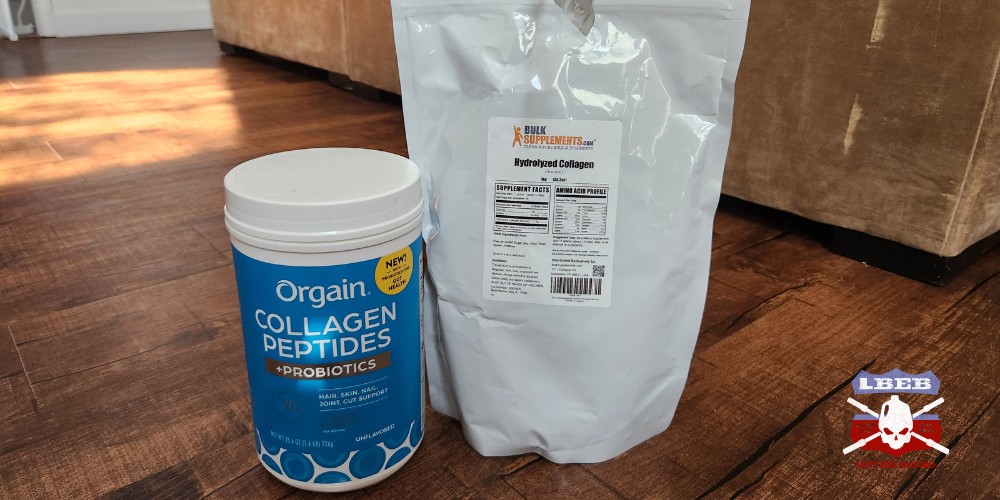
Collagen, constituting 30% of your body’s protein, is the most abundant protein in your body [1]. All proteins are made of building blocks called “amino acids.”
Collagen comprises the amino acids glycine, proline, lysine, hydroxylysine, and hydroxyproline, which “knit” together to make a unit called “polypeptide chains.”
Collagen is composed of three polypeptide chains, commonly referred to as α chains. These chains are numbered with Arabic numerals [2].
The basic unit of collagen is a triple helix structure formed by intertwining these three polypeptide chains [3].
If this sounds a bit complex, visualize it like this: Collagen’s triple helix structure is like a tightly woven cable, where three individual threads, representing the polypeptide chains, intertwine and twist together, creating a resilient and strong cord that forms the backbone of support in your body’s connective tissues.
Collagen is a fibrous protein and is the main component of connective tissues such as tendons, ligaments, skin, and bones, providing strength and support to various structures in the body.
28 kinds of collagen come together to form various complex structures.
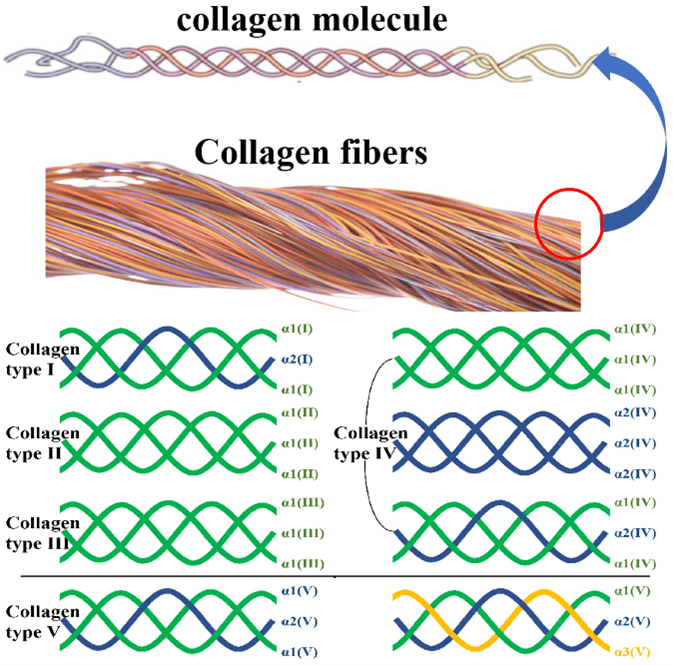
Figure 1: Collagen’s structure [4]
What Is Whey Protein
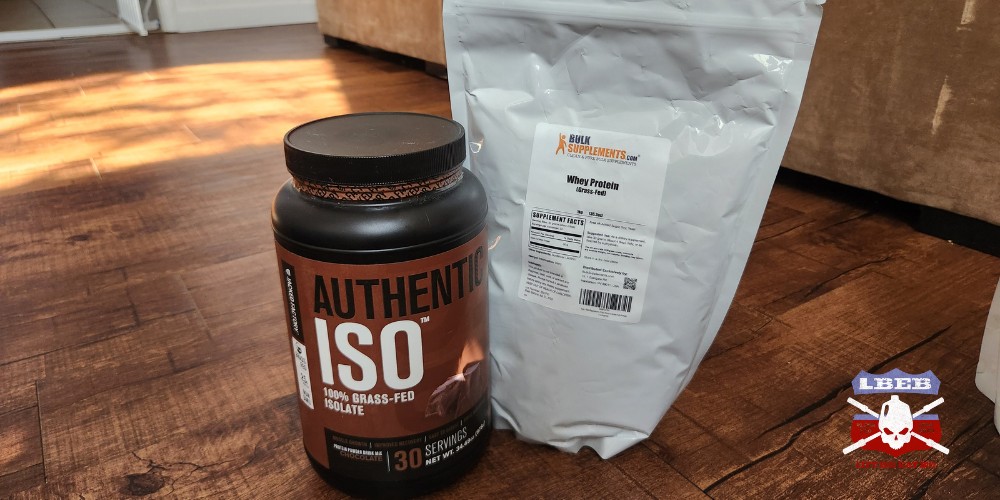
Whey protein is a high-quality protein derived from milk during the cheese-making process. It is a by-product of the separation of milk into curds and whey.
Whey protein is rich in essential amino acids, which are proteins that the body itself cannot make.
It is available in powder form and is commonly used in shakes and smoothies or added to food as a convenient and effective way to increase protein intake.
There are 9 essential amino acids, which are amino acids that cannot be made by the body: histidine, isoleucine, leucine, lysine, methionine, phenylalanine, threonine, tryptophan, and valine, each playing crucial roles in various physiological functions within the human body [5].
Collagen vs. Whey Protein Differences
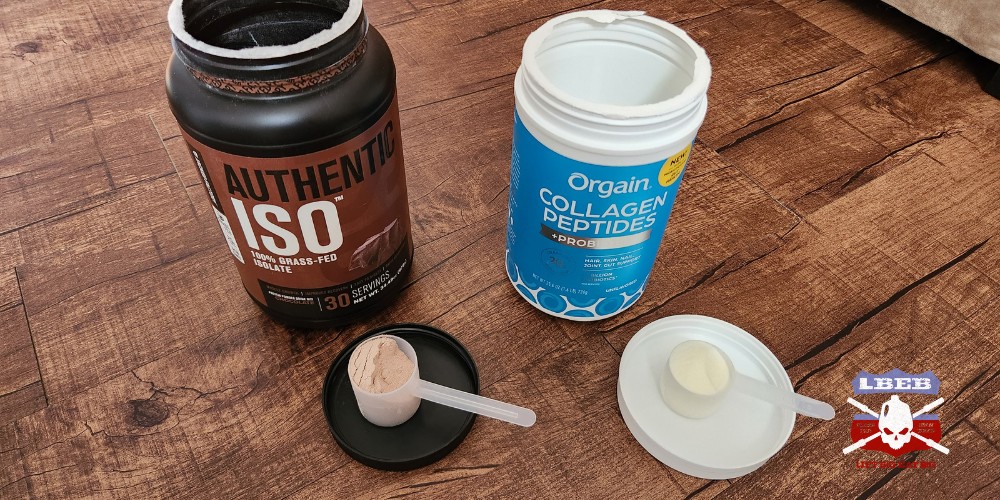
Protein Quality
The “Protein Digestibility-Corrected Amino Acid Score” (PDCAAS) measures protein quality in science.
It looks at the amount of essential amino acids, the ability of the protein to provide all 9 of the essential amino acids, and the digestibility of these amino acids.
The scale ranges from 0 to 1, with 1 indicating the highest protein quality.
Whey protein typically has a PDCAAS of 1, as it contains all essential amino acids in adequate amounts and is highly digestible.
Whey is considered a complete protein source, making it an excellent choice for supporting muscle growth and recovery.
Conversely, Collagen is not a complete protein because it lacks certain essential amino acids, particularly tryptophan and isoleucine.
As a result, collagen generally has a lower PDCAAS than whey protein.
However, collagen specifically supports connective tissues, skin, and joint health rather than being a primary source of complete protein.
Muscle Building and Body Composition
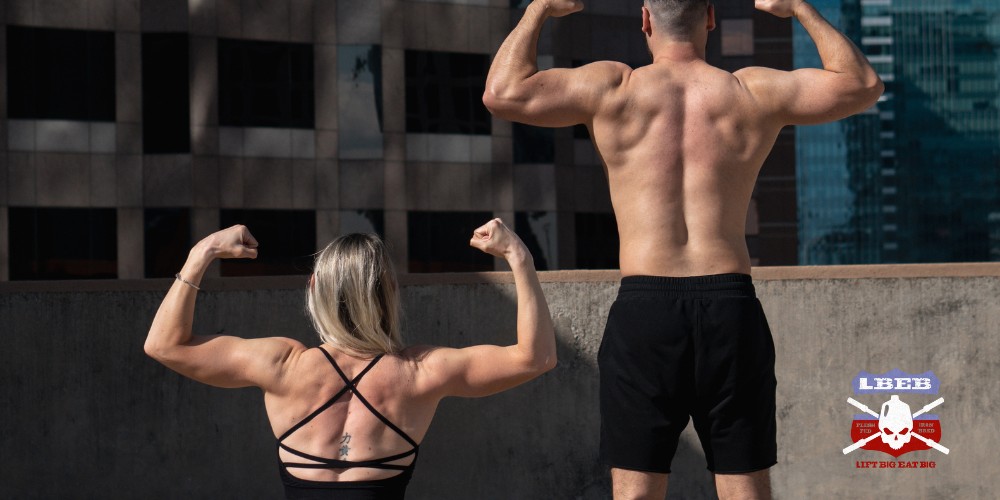
Collagen
Collagen contains abundant non-essential amino acids such as proline and glycine but lacks essential amino acids like leucine, which is a primary stimulator of muscle protein synthesis [6].
While certain studies suggest collagen intake may boost muscle mass, a systematic review of 15 studies found that young, recreationally active individuals did not exhibit as substantial changes in body composition and strength with 15 g/day of collagen supplementation and resistance training compared to the observed effects in elderly sarcopenic men [7] (older men losing muscle).
A hypothesis has been that collagen protein can increase muscle connective tissue after exercise. In a new study [8] comparing whey protein and collagen, 45 healthy young men and women consumed either 30g of whey protein, 30g of collagen protein, or a noncaloric placebo after a single bout of resistance exercise.
The barbell squat exercise increased the synthesis of both contractile (proteins that help muscle to contact) and connective proteins (proteins that form connective tissue).
Whey protein intake further enhanced the synthesis of contractile proteins but, surprisingly, had no impact on connective proteins.
Collagen protein ingestion did not influence the synthesis of contractile proteins or connective tissue.
While some studies show positive results for collagen supplementation in tendons and bones, this study suggests minimal impact on muscle connective tissue.
Taking whey protein can boost the synthesis of contractile proteins while ingesting collagen protein does not influence the synthesis of connective proteins [8].
Whey protein
Whey protein supplements contain peptides known for their antioxidant properties [9] and enhance satiety [10].
Recognized as a high-quality nutritional protein, whey is rich in branched-chain amino acids (BCAAs), particularly leucine, crucial for preserving muscle mass during weight loss and enhancing muscle protein synthesis [11].
For these reasons, numerous studies have shown whey protein to be beneficial for muscle building [12, 13, 14].
In a randomized controlled trial of 22 older women, it was found that whey protein, but not collagen, improved skeletal muscle building when measured over a couple of days [15].
Timing And Dose

Collagen
The efficacy of collagen is highly dependent on timing. In some studies, gelatine is used as a collagen source because it contains similar amino acids to collagen [16].
It is recommended to take 15 g of gelatine or collagen in liquid or gel form 30 – 60 min before training with a source of vitamin C, which can be supplemental (fizzy or tablet) or natural (orange juice/strawberry juice, etc).
The exact amount of collagen can depend on body weight, and it is suggested to talk to a doctor or dietitian to find the optimum dose for you if you are unsure [17, 18].
Whey protein
Between 1 to 4 hours post-meal, there is an elevation in muscle protein synthesis, resulting in a favorable muscle protein balance.
Conversely, during periods without food intake, the pace of muscle protein synthesis diminishes, leading to a negative muscle protein balance.
That is why it is important to distribute your protein evenly throughout the day, with a source of protein approximately every 3 – 4h, with a recommended amount of 20 – 25g per meal [11, 19].
- Post-workout
New studies suggest that adding protein and carbohydrates to your diet following intense endurance and resistance exercises can enhance muscle protein synthesis [20].
This is why people often refer to the period after a workout as the “anabolic window.
Nevertheless, the anabolic window is probably longer than previously thought, as muscles appear to remain receptive to protein for up to 24 hours post-exercise. [21].
It is easier to remember to take protein right after a workout. It offers a window of opportunity to spread protein throughout the day, so trying to take protein soon after a workout can be beneficial.
Eating protein after exercise, especially when carbohydrate intake is below optimal levels (<1.2 g/kg/day), can enhance the recovery of muscle glycogen and potentially reduce post-workout muscle damage [11].
- During workouts
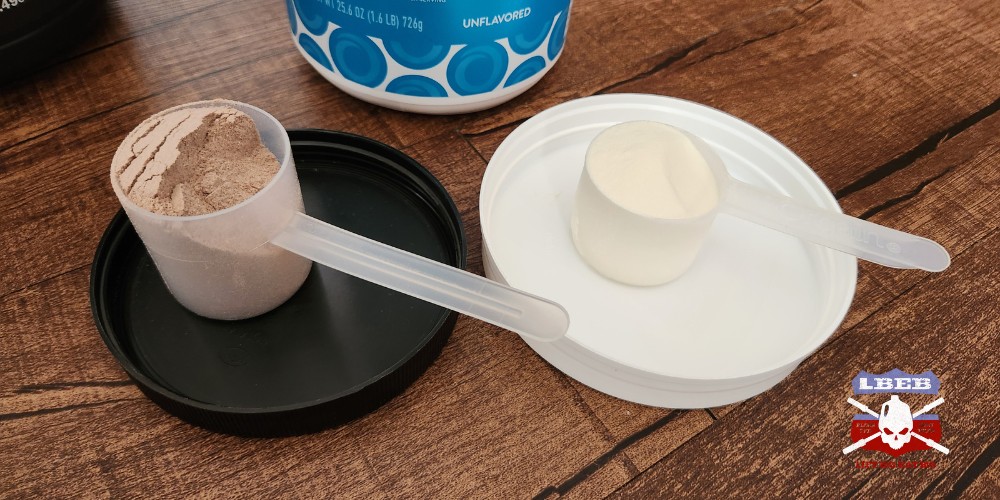
While consuming protein during workouts has not demonstrated performance improvement, studies indicate that it can reduce post-workout indicators of muscle damage within 12 to 24 hours and alleviate muscle soreness following exercise [22, 23, 24].
It is recommended that athletes take about 0.25 g of protein per kg of bodyweight per hour of training [23].
- Pre-bed snack
Numerous studies have reported that having 20 – 30 g of protein 30 – 90 minutes before bed can enhance muscle protein synthesis without causing fat gain [25, 26, 27].
The recommended daily protein allowance (RDA) is currently 0.8 g/kg/day, but it may not be enough for athletes. Previous suggestions of 1.2–1.3 g/kg/day may have underestimated needs.
Protein requirements depend on factors like exercise, age, body composition, and energy intake.
Daily intakes of 1.4 to 2.0 g/kg/day are considered the minimum, with higher amounts for those limiting calories while maintaining muscle.
Recommendations vary by age and recent resistance exercise for optimal muscle protein synthesis, typically suggesting 0.25 g/kg or an absolute dose of 20–40 g per serving.
Older individuals may benefit from higher doses (around 40 g), and even more (approximately 70 g) may be needed to reduce muscle protein breakdown effectively.
- Total amount per day
A systematic review of 49 studies showed that 1.6g/kg of protein per day effectively increased muscle mass while resistance training in healthy adults [36].
For athletes in a large calorie deficit, higher intakes of protein can be beneficial to retain muscle mass – up to 2.3 – 3.1g/kg fat free mass per day [37].
A final study showed that taking in more than 5.5 times the RDA, up to 4g/kg, while in a surplus (taking in more calories than you need every day) does not lead to fat mass gain, making it a great strategy to use while building muscle [38].
Tendon Repair
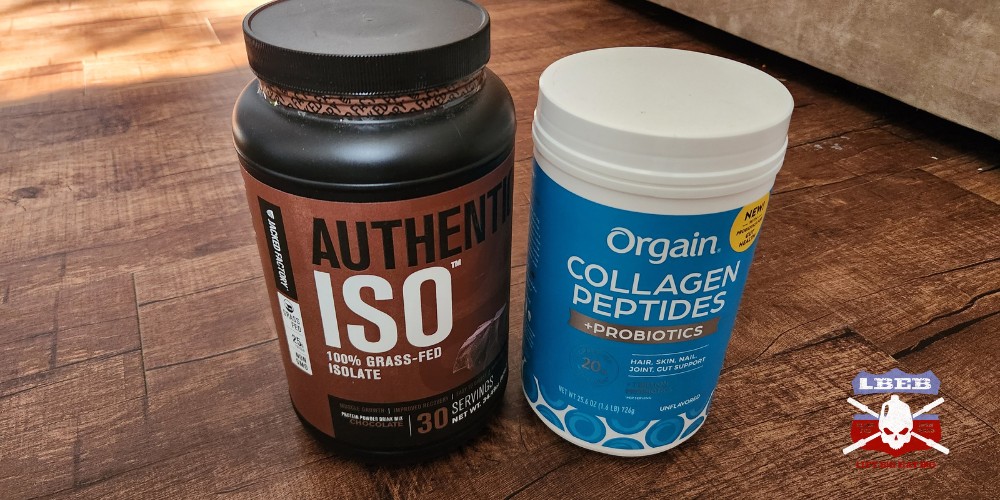
Collagen
The structure and function of tissues such as tendons, ligaments, cartilage, and bones rely on their collagen-rich matrix.
This matrix, which is the non-cellular component of these tissues, is influenced by factors like the amount of collagen, crosslinking, and tissue content (water or minerals) [28, 29].
Diseases or nutritional/genetic issues can compromise this matrix, making tissues less capable of handling normal activity [30].
Proper nutrition and exercise generally enhance matrix function. Acute exercise promotes collagen synthesis and the expression of an enzyme crucial for collagen strength.
Consequently, after training, tissues become denser, stiffer, and stronger, able to withstand higher loads [31, 32].
In a study with eight healthy men [17], participants took either 5 or 15 g of vitamin C–enriched gelatin or a placebo for three days.
Blood samples were collected to check amino acids, and larger samples were taken before and after gelatin intake to treat engineered ligaments.
Participants then did 6-minute rope-skipping sessions three times daily with a 6-hour gap. Results showed increased amino acids after gelatin intake.
Ligaments treated with serum from gelatin consumers had more collagen and better mechanics. Those taking 15 g of gelatin before exercise had double the collagen synthesis markers in their blood.
This suggests that adding gelatin to intermittent exercise can boost collagen synthesis, potentially helping with injury prevention and tissue repair.
Because of the cross-linking of collagen, it increases the density of the matrix, which in turn increases the stiffness of tendons and, as a result, force transfer.
For example, in a three-week study [18], 50 healthy young male athletes were given either vitamin C-enriched collagen or a placebo before their strength training sessions.
The group receiving hydrolyzed collagen and vitamin C took 20 grams of collagen and 50 milligrams of vitamin C daily, while the placebo group had maltodextrin.
Both groups followed the same muscle power training routine. The researchers measured the rate of force development (RFD) and other performance indicators throughout the study.
The results showed that the collagen and vitamin C group’s maximal RFD returned to baseline levels, while the placebo group stayed lower.
By the end of the study, only the collagen and vitamin C group had fully recovered their RFD. The collagen and vitamin C group also showed improvements in specific jump-related measures.
This suggests that vitamin C-enriched collagen supplementation might help with muscle power and force development during strength training.
Whey protein
Less evidence is available for the role of whey protein in tendon repair specifically.
One study found that whey protein may enhance tendon growth during strength training [33]. Supporting the role of whey, rats showed similar tendon growth after 5 weeks of leucine supplementation following malnutrition [34].
However, it’s unclear if this happens directly in the tendon or if it’s because muscles get bigger and stronger.
Lactose, Dairy, And Other Allergens
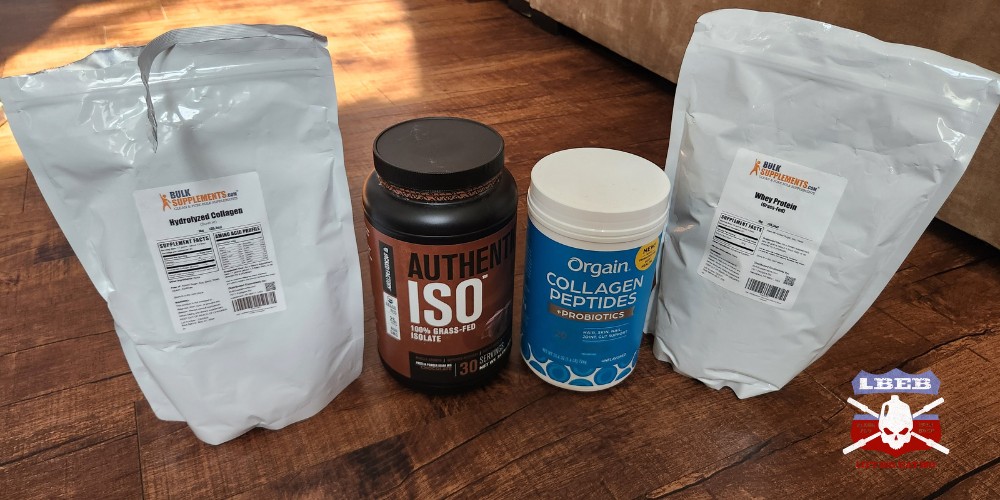
Whey protein
Because whey protein is a by-product of the cheese-making process, it often contains lactose. If you are lactose intolerant, opting for whey protein isolate can reduce the chances of discomfort.
With a minimum purity of 90% protein, the final ingredient contains minimal to no lactose.
If you are allergic to cow’s milk, it is better to avoid whey protein and opt for plant-based protein supplements like soy.
Whey protein contains proteins found in cow’s milk, and individuals with a milk protein allergy may experience adverse reactions, including allergic responses.
It’s essential to consult with a healthcare professional or allergist to determine the most suitable protein options based on individual allergies and dietary requirements.
Collagen
Collagen does not contain any lactose. However, if you have allergies, also be cautious when considering collagen supplements.
Collagen supplements are often derived from animal sources, such as bovine (cow), porcine (pig), or marine (fish) collagen.
Individuals with specific allergies to these sources may experience allergic reactions to collagen supplements.
Read the product labels carefully and choose collagen supplements that explicitly state their source.
There are also collagen supplements available that are labeled as hypoallergenic or specifically formulated to minimize allergenic potential.
However, individual responses to these products may vary, and it’s advisable to seek professional guidance to ensure the safety of collagen supplementation for individuals with allergies.
Should You Use Collagen Or Whey Protein?
The two products have different amino acid profiles and are subsequently used for different reasons. Whey protein is a clear winner for building muscle and muscle recovery.
For tendon strength and recovery from tissue injuries, collagen would be your best bet, but it is crucial to take it 30 – 60 minutes before training with a source of vitamin C to enhance efficacy.
References
1. Antonio, J., Peacock, C. A., Ellerbroek, A., Fromhoff, B., & Silver, T. (2014). The effects of consuming a high protein diet (4.4 g/kg/d) on body composition in resistance-trained individuals. J Int Soc Sports Nutr, 11, 19. doi:10.1186/1550-2783-11-19
2. Aussieker, T., Hilkens, L., Holwerda, A. M., Fuchs, C. J., Houben, L. H. P., Senden, J. M., . . . LJC, V. A. N. L. (2023). Collagen Protein Ingestion during Recovery from Exercise Does Not Increase Muscle Connective Protein Synthesis Rates. Med Sci Sports Exerc, 55(10), 1792-1802. doi:10.1249/mss.0000000000003214
3. Baar, K. (2017). Minimizing Injury and Maximizing Return to Play: Lessons from Engineered Ligaments. Sports Med, 47(Suppl 1), 5-11. doi:10.1007/s40279-017-0719-x
4. Barbosa, A. W., Benevides, G. P., Alferes, L. M., Salomão, E. M., Gomes-Marcondes, M. C., & Gomes, L. (2012). A leucine-rich diet and exercise affect the biomechanical characteristics of the digital flexor tendon in rats after nutritional recovery. Amino Acids, 42(1), 329-336. doi:10.1007/s00726-010-0810-1
5. Buehler, M. J. (2008). Nanomechanics of collagen fibrils under varying cross-link densities: atomistic and continuum studies. J Mech Behav Biomed Mater, 1(1), 59-67. doi:10.1016/j.jmbbm.2007.04.001
6. Burd, N. A., West, D. W., Moore, D. R., Atherton, P. J., Staples, A. W., Prior, T., . . . Phillips, S. M. (2011). Enhanced amino acid sensitivity of myofibrillar protein synthesis persists for up to 24 h after resistance exercise in young men. J Nutr, 141(4), 568-573. doi:10.3945/jn.110.135038
7. Churchward-Venne, T., & Burd, N. (2012). Supplementation of Suboptimal Protein Dose with Leucine or EAAs: Effects of Myofibrillar Protein Synthesis at Rest and Following Resistance Exercise in Men. Journal of Physiology.
8. Coffey, V. G., Moore, D. R., Burd, N. A., Rerecich, T., Stellingwerff, T., Garnham, A. P., . . . Hawley, J. A. (2011). Nutrient provision increases signalling and protein synthesis in human skeletal muscle after repeated sprints. Eur J Appl Physiol, 111(7), 1473-1483. doi:10.1007/s00421-010-1768-0
9. Couppé, C., Kongsgaard, M., Aagaard, P., Hansen, P., Bojsen-Moller, J., Kjaer, M., & Magnusson, S. P. (2008). Habitual loading results in tendon hypertrophy and increased stiffness of the human patellar tendon. J Appl Physiol (1985), 105(3), 805-810. doi:10.1152/japplphysiol.90361.2008
10. Devries, M. C., McGlory, C., Bolster, D. R., Kamil, A., Rahn, M., Harkness, L., . . . Phillips, S. M. (2018). Leucine, not total protein, content of a supplement is the primary determinant of muscle protein anabolic responses in healthy older women. The Journal of nutrition, 148(7), 1088-1095.
11. Farup, J., Rahbek, S. K., Vendelbo, M. H., Matzon, A., Hindhede, J., Bejder, A., . . . Vissing, K. (2014). Whey protein hydrolysate augments tendon and muscle hypertrophy independent of resistance exercise contraction mode. Scand J Med Sci Sports, 24(5), 788-798. doi:10.1111/sms.12083
12. Heinemeier, K. M., Olesen, J. L., Haddad, F., Schjerling, P., Baldwin, K. M., & Kjaer, M. (2009). Effect of unloading followed by reloading on expression of collagen and related growth factors in rat tendon and muscle. J Appl Physiol (1985), 106(1), 178-186. doi:10.1152/japplphysiol.91092.2008
13. Helms, E. R., Zinn, C., Rowlands, D. S., & Brown, S. R. (2014). A systematic review of dietary protein during caloric restriction in resistance trained lean athletes: a case for higher intakes. Int J Sport Nutr Exerc Metab, 24(2), 127-138. doi:10.1123/ijsnem.2013-0054
14. Hou, Y., & Wu, G. (2018). Nutritionally essential amino acids. Advances in Nutrition, 9(6), 849-851.
15. Jäger, R., Kerksick, C. M., Campbell, B. I., Cribb, P. J., Wells, S. D., Skwiat, T. M., . . . Antonio, J. (2017). International Society of Sports Nutrition Position Stand: protein and exercise. J Int Soc Sports Nutr, 14, 20. doi:10.1186/s12970-017-0177-8
16. Kerksick, C. M., Wilborn, C. D., Roberts, M. D., Smith-Ryan, A., Kleiner, S. M., Jäger, R., . . . Kreider, R. B. (2018). ISSN exercise & sports nutrition review update: research & recommendations. J Int Soc Sports Nutr, 15(1), 38. doi:10.1186/s12970-018-0242-y
17. Kerksick, C. M., Wismann-Bunn, J., Fogt, D., Thomas, A. R., Taylor, L., Campbell, B. I., . . . Kreider, R. B. (2010). Changes in weight loss, body composition and cardiovascular disease risk after altering macronutrient distributions during a regular exercise program in obese women. Nutr J, 9, 59. doi:10.1186/1475-2891-9-59
18. Khatri, M., Naughton, R. J., Clifford, T., Harper, L. D., & Corr, L. (2021). The effects of collagen peptide supplementation on body composition, collagen synthesis, and recovery from joint injury and exercise: a systematic review. Amino Acids, 53(10), 1493-1506.
19. Kinsey, A. W., & Ormsbee, M. J. (2015). The health impact of nighttime eating: old and new perspectives. Nutrients, 7(4), 2648-2662.
20. Kipp, D. E., McElvain, M., Kimmel, D. B., Akhter, M. P., Robinson, R. G., & Lukert, B. P. (1996). Scurvy results in decreased collagen synthesis and bone density in the guinea pig animal model. Bone, 18(3), 281-288. doi:10.1016/8756-3282(95)00481-5
21. Kjaer, M. (2004). Role of extracellular matrix in adaptation of tendon and skeletal muscle to mechanical loading. Physiol Rev, 84(2), 649-698. doi:10.1152/physrev.00031.2003
22. Lis, D. M., Jordan, M., Lipuma, T., Smith, T., Schaal, K., & Baar, K. (2022). Collagen and Vitamin C Supplementation Increases Lower Limb Rate of Force Development. Int J Sport Nutr Exerc Metab, 32(2), 65-73. doi:10.1123/ijsnem.2020-0313
23. Liu, D., Nikoo, M., Boran, G., Zhou, P., & Regenstein, J. M. (2015). Collagen and gelatin. Annu Rev Food Sci Technol, 6, 527-557. doi:10.1146/annurev-food-031414-111800
24. Oertzen-Hagemann, V., Kirmse, M., Eggers, B., Pfeiffer, K., Marcus, K., de Marées, M., & Platen, P. (2019). Effects of 12 Weeks of Hypertrophy Resistance Exercise Training Combined with Collagen Peptide Supplementation on the Skeletal Muscle Proteome in Recreationally Active Men. Nutrients, 11(5). doi:10.3390/nu11051072
25. Oikawa, S. Y., Kamal, M. J., Webb, E. K., McGlory, C., Baker, S. K., & Phillips, S. M. (2020). Whey protein but not collagen peptides stimulate acute and longer-term muscle protein synthesis with and without resistance exercise in healthy older women: a randomized controlled trial. Am J Clin Nutr, 111(3), 708-718. doi:10.1093/ajcn/nqz332
26. Ricard-Blum, S. (2011). The collagen family. Cold Spring Harb Perspect Biol, 3(1), a004978. doi:10.1101/cshperspect.a004978
27. Romano-Ely, B. C., Todd, M. K., Saunders, M. J., & LAURENT, T. S. (2006). Effect of an isocaloric carbohydrate-protein-antioxidant drink on cycling performance. Medicine & Science in Sports & Exercise, 38(9), 1608-1616.
28. Saunders, M. J., Kane, M. D., & Todd, M. K. (2004). Effects of a carbohydrate-protein beverage on cycling endurance and muscle damage. Medicine & Science in Sports & Exercise, 36(7), 1233-1238.
29. Shaw, G., Lee-Barthel, A., Ross, M. L., Wang, B., & Baar, K. (2017). Vitamin C-enriched gelatin supplementation before intermittent activity augments collagen synthesis. Am J Clin Nutr, 105(1), 136-143. doi:10.3945/ajcn.116.138594
30. Shoulders, M. D., & Raines, R. T. (2009). Collagen structure and stability. Annu Rev Biochem, 78, 929-958. doi:10.1146/annurev.biochem.77.032207.120833
31. Solah, V. A., Kerr, D. A., Adikara, C. D., Meng, X., Binns, C. W., Zhu, K., . . . Prince, R. L. (2010). Differences in satiety effects of alginate- and whey protein-based foods. Appetite, 54(3), 485-491. doi:10.1016/j.appet.2010.01.019
32. Tang, J. E., Moore, D. R., Kujbida, G. W., Tarnopolsky, M. A., & Phillips, S. M. (2009). Ingestion of whey hydrolysate, casein, or soy protein isolate: effects on mixed muscle protein synthesis at rest and following resistance exercise in young men. Journal of applied physiology.
33. Trommelen, J., & Van Loon, L. J. (2016). Pre-sleep protein ingestion to improve the skeletal muscle adaptive response to exercise training. Nutrients, 8(12), 763.
34. Valentine, R. J., Saunders, M. J., Todd, M. K., & Laurent, T. G. S. (2008). Influence of carbohydrate-protein beverage on cycling endurance and indices of muscle disruption. International journal of sport nutrition and exercise metabolism, 18(4), 363-378.
35. van der Rest, M., & Garrone, R. (1991). Collagen family of proteins. Faseb j, 5(13), 2814-2823.
36. Xu, R., Liu, N., Xu, X., & Kong, B. (2011). Antioxidative effects of whey protein on peroxide-induced cytotoxicity. J Dairy Sci, 94(8), 3739-3746. doi:10.3168/jds.2010-3891
37. Zhou, N., Liu, Y.-D., Zhang, Y., Gu, T.-W., & Peng, L.-H. (2023). Pharmacological Functions, Synthesis, and Delivery Progress for Collagen as Biodrug and Biomaterial. Pharmaceutics, 15(5), 1443. Retrieved from https://www.mdpi.com/1999-4923/15/5/1443
